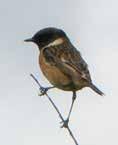






































I hope you enjoyed our Coronation special last month and indeed, the Coronation itself. We’ve gone in a completely different direction for the front covers this month, as you can see! I really hope they bring a smile to your face like they did for us here in the office! It’s always difficult to follow such a strong event but as every day is ‘bring your dog to work day’ for us (Flake won’t let us leave the house without him!), we couldn’t resist!
Well, isn’t this sunshine refreshing? I say that, but in about 6 weeks’ time, I’m going to be boiling hot and moaning that I can’t sleep or eat – actually, not eating might be of benefit! Question – is it just me or since joining the 39+ club, do you only need to look at a profiterole and 2 stone instantly lands on your hips? …. thinking about it, it isn’t really the looking that’s the problem is it?!


Anyhoo, we’ve had a busy old month here at Voice HQ, not really sure where time has gone – weddings, holidays, lots of outings & a 26-mile charity walk. That last one wasn’t me, that was our Office Manager Michelle & her hubby. They hopped on the bus down to London and raised money for breast cancer charities by doing the Walk the Walk, marathon Moonwalk, which is as it states, you walk through the night, past the specially illuminated landmarks of London. She did it in an awesome time to boot, 7hrs 29 mins. Anybody who knows Michelle, knows that she is a

force to be reckoned with and she smashed it as predicted and we’re all incredibly proud of them both.
Our other outings this month were Chesterfield Bowl & Trentham Monkey Forest, you may have seen us out and about via our social media? First things first, Chesterfield Bowl is an impressive hidden gem with all mod cons including air hockey (my favourite!). It’s a great place and the food was excellent – absolutely ideal for a party – or just if you want a fun night out!! We had an absolutely fabulous time, and the stars of the bowling show were Lisa and Danielle, although Liam would like me to mention that he achieved a ‘Turkey’ – whatever that is!!
Monkey Forest is very literally one of my happiest places!! I’ve been a few times before and going with the team was a real treat. I’m not a massive zoo fan, purely because of the concept of animals being contained in small spaces (I was okay with Toronto Zoo as each animal had a space the size of Berkshire to roam freely in!!) but to see Barbary Macaques wandering around freely, is just wonderful. Just to note as well, this is a very peaceful group, they are nothing like the ones in Gibraltar & the little babies were beyond cute!!
Anyways, I’m off for a Mojito (gotta be done, the sun is shining!!) we shall see you next month.
Happy Reading,











It is often said that Britain is a nation of dog lovers - but what happens to our canine friends when we have to leave them at home and head out to work?

Dogs are social creatures, pack animals, and they really do not like being left alone for extended periods. Having their special human seemingly abandoned them for hours at a time must be unbearable, is it any wonder that dogs left alone are often prone to destructive tendencies? The combination of loneliness and boredom leads them to decide that “eating dad’s slippers” is a good way to pass the time!
One solution for the home alone pooch is to take them to work with you; this is becoming more common, especially in office based environments - taking your dog to work in a hospital, factory, or restaurant may not be such a good idea. Research by pet food company EUKANUBA, has revealed that almost one in ten (8%) UK employees – that’s 2.5 million people – already bring their canine companion to work.


Evidence suggests that having an office dog around can be therapeutic for the human workers (unless of course someone is allergic to dogs!). Having a dog in the office has been shown to reduce people’s stress levels, and that means all the employees, not just the dog owner.
The mere fact that a dog is there, needing love, petting and trips outside, can help deflect the mental negativity of a “heads down, crack on with it” work culture. A dog makes people stop and pause in the working day, take 5 minutes to play with the animal, stroke it, take it for short walks…
Dogs also up the humour quotient in a working day - our furry friends make us smile with their silly antics, and their presence sparks conversations. Dogs can bring a workplace together, forging relationships that may not ordinarily happen. In other words, having a dog around lightens the mood and thus improves employee mental health.
This kind of reduction in work stress levels and improvement in mental health obviously has a longer-term effect, both on individuals and the business in general. Less stressed staff means less time off with stress-related illnesses, which has the knock-on effect of increased productivity. Here are five good reasons why taking your dog to work is beneficial:


1. Dogs reduce stress
2. Dogs increase morale and team bonding
3. Dogs encourage regular breaks throughout the day
4. Dogs increase productivity in the long term

5. Dogs increase employee retention and reduce sick days



Words of warning…hard as it may be to believe, not everyone likes dogs, and some folks are downright scared of them, consider this before taking your pet to work. And, if several people in an enclosed office environment decided to bring their dogs to work, chaos could ensue - think about staggering the days.
DO YOU TAKE YOUR FURRY FRIEND TO WORK WITH YOU?


A TRADITIONAL AGRICULTURAL SHOW

WEDNESDAY 9 AUGUST 2023
RECTORY FIELDS, ASHOVER, C 9.00AM UNTIL DUSK

TEL 01623 811545 E MAIL enquiries@ashovershow.co.uk www.ashovershow.co.uk



ASHOVER AGRICULTURAL & HORTICULTURAL SOCIETY RAISING FUNDS FOR THE ASHOVER SHOW




Welcome to YOUR community noticeboard. A dedicated space for you to post notices, events and for not-for-profit community groups advertise in.
To place a notice, from a super-low rate of £6.30+VAT per square




Contact Danielle on 01773 549035 or community@voicemagazines.co.uk
44mm
44mm £6.30 +VAT Per Square
549035

MANY HAVE LONG AWAITED THIS TIME AFTER ENDURING THE COLD WINTER SEASON.

We knew it would arrive, but many kept asking ‘WHEN will the warmer weather be here?’.
Our Bibles tell us this: -
As long as the earth endures, seedtime and harvest, cold and heat, summer and winter, day and night will never cease. Seasons will never stop.
JUST LIKE THE LOVE OF OUR FATHER - He will NEVER stop loving YOU - No matter what happens His love for you is constant.
IT ENDURES FOREVER.
GENESIS 8:22
ANN POWELL - annandgraham29@gmail.com
Lockouts
Multi-point lock to uPVC, timber & aluminium doors & windows
Patio door locks, tracks, rollers and handles

Any kind of lock supplied & fitted
Door & Window handles, hinges, gaskets and letter boxes
Door & window realignment (Toe & Heel)
Internal & External doors and frames
Replacement misted up glass units.
10 years guarantee on all replacement double glazed glass
Security glass & single glass supplied & fitted
Kitchen’s supplied & fitted
Staircase & banister rail installation

Handrails, newel posts & spindle installation
Windows, Timber & uPVC (supplied & fitted)
Please call James for a FREE quotation


anytime on: 07826 815355
james.burnside@jblocksmith.co.uk
YOU CAN MERGE SQUARES TOGETHER AND ALL YOU PAY FOR IS THE SQUARES THAT YOU USE






Looking for a fun and cost-effective way to capture your summer memories with your loved ones? Look no further than our minisession photoshoot! Our experienced photographer will guide you through a 30-minute outdoor shoot, capturing natural and candid moments of your family, whether human or animal, while the sun shines and the flowers bloom. Don't let this summer pass by without capturing its beauty - book your mini-session photoshoot today!
Our affordable pricing includes 3 high resolution digital files or a 10x8 ready-to-frame print. You can purchase additional prints, framed wall art or digital images if you wish.


Up coming sessions – £60






24 - 25 Jun Clumber Park
25 - 30 Jul Carsington Water
7 - 13 Aug Ashover sunflowers











Calling all monkey lovers! Recently, the team at Voice Magazine was invited to visit Trentham Monkey Forest, and let us tell you, it was an experience like no other.


The Monkey Forest is home to over 140 Barbary macaques who roam free in a 60-acre woodland. As we entered the forest, we were immediately greeted by the playful monkeys, swinging from tree to tree and enjoying their natural habitat. It was like stepping into a scene from a movie, where monkeys were the stars.
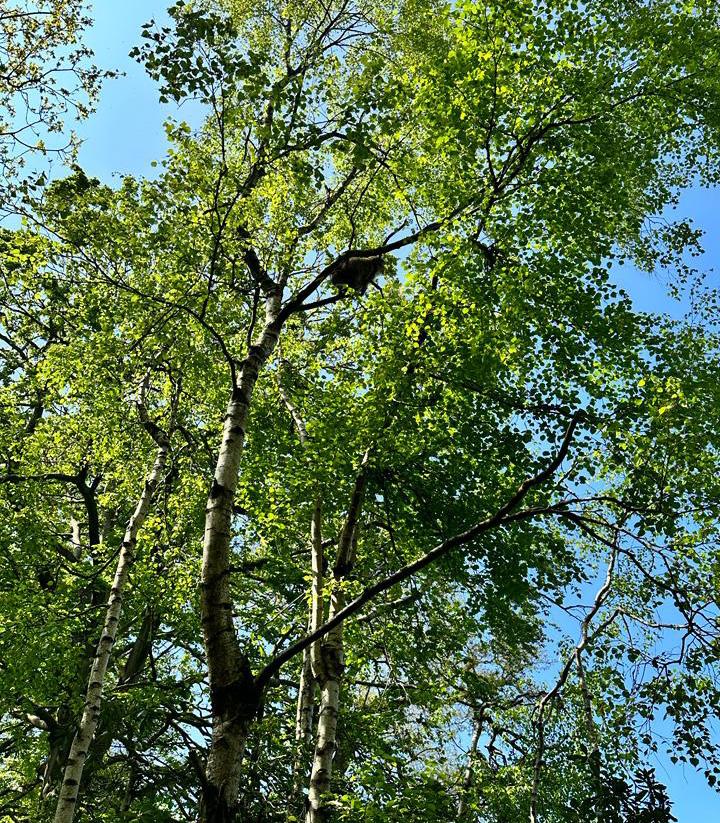
The staff at the Monkey Forest were just as impressive as the monkeys themselves. They were knowledgeable and passionate about the conservation of the Barbary macaques and their environment. We were constantly in awe of their dedication to preserving the natural habitat of these intelligent and fascinating creatures.
As we walked through the forest, the staff were always on hand with interesting facts and information about each monkey, knowing them all by name. It was evident that they had a deep understanding and respect for these animals, which made the experience all the more enriching.

One thing that stood out to us was the Monkey Forest’s commitment to replicating the monkeys’ natural environment as much as possible. They had created a beautiful and expansive forest space, complete with streams and rocks, giving the macaques plenty of space to roam and play.

Overall, our visit to Trentham Monkey Forest was an unforgettable experience. We left with a newfound appreciation for the beauty and intelligence of Barbary macaques and a deep respect for the staff who work tirelessly to protect them.





Trentham Monkey Forest offers ample free parking, a Jungle gift shop, a café, two adventure playgrounds, a Willow Maze, information rooms, picnic areas, and VIP Experiences. Explore hidden trails, enjoy a meadow walk, and get up close with monkeys. It’s a perfect family day out!


If you haven’t already visited, we highly recommend taking a trip to Trentham Monkey Forest. It’s a fun and educational day out for the whole family, and you’ll leave with memories that will last a lifetime.










1. Preheat your oven to 220°C/fan 200°C/gas 7.




2. Put the sweet potato wedges in a medium-size non-stick roasting tin or baking tray. Stand the cobettes on a board and, using a sharp knife, carefully halve each cobette lengthways, then halve each half lengthways again to make 4 quarters – you should have 16 ribs in total. Add them to the sweet potatoes, spray everything with lowcalorie cooking spray and roast for 20 minutes.
3. While they’re cooking, put the chicken on a board and cut from the thickest side almost all of the way through horizontally, so
This recipe caught the eye immediately. Fresh, tasty, simple to prepare and delicious to eat. Perfect!
that they open up like butterflies. Sprinkle with the peri-peri and set aside. (‘Butterflying’ helps them cook quicker and capture even more of the fiery spice.) Add the chicken to the tin and roast for a further 15-20 minutes or until the chicken is cooked through and the vegetables are tender. While you’re waiting, mix the salsa ingredients in a small bowl and season to taste.
4. When everything’s ready, spoon the salsa around the tin and serve with the lime slices or wedges, coriander sprigs and a big salad.

Ingredients:
• 2 large sweet potatoes, cut into wedges

• 4 sweetcorn cobettes (or 2 corn cobs, halved)

• Low-calorie cooking spray
• 2 skinless and boneless chicken breasts
• 2 level tsp periperi seasoning
For the salsa:
• 2 tomatoes, finely chopped
• 1 small red onion, finely chopped
• ½ small pack fresh coriander, finely chopped, plus sprigs to serve
• Juice of ½ lime, plus slices or wedges to serve
Supply
Supply & Install of all Domestic & Contract

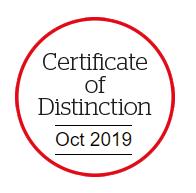

Supply & Install of RealWood & Laminate Floorings
Supply & Install of Karndean Floorings
Supply & Install of Sisal & Natural Floorings
Supply
Monday,Tuesday,Thursday & Friday 9am to 5pm Wednesday 9am to 12pm & Saturday 9am to 4pm






Pitcherwits® are crossword puzzles where some of the clues are in pictures. Sound easy? It’s not called “Pit-your-wits” for nothing! The mixture of cryptic and picture clues, combined with Professor Rebus’ unique sense of humour, will keep you entertained for hours.

Across
9 Fed off fixated attempts to get back in the cab (4)


10 Alongside, in stretching out (4)
11 Stack can be safe with hospital treatment (5)
12 Pal in toxic, humble surroundings (4)
13 A while back, with a force to be excited about (4)
Down
2 Employment is a somewhat amorphous exercise (3)
3 Cut up, formerly (3)
7 Wish to happen from eternal springs? (4,3)
14 Personal boomerang post? (1,1,1)

15 Lotto ought to be reduced, also (3)

1 Took it out of the socket, but still stuck at it? (7,4)
5 Abstains from linking school head, say, with gum sticks (7)

14 What’s all this about clarets being red? (7)
Down
1 Big cats hunting in the Alps for landfill nuisance? (7,4)
4 First red space, man? (4,7)
16 Resigned, maybe, like a transformer? (7,4)
6 Case is Mick’s: a bit earthshaking! (7)

8 Few took the earl to be in a state of general health (7)
This puzzles has been devised by the brilliant Professor Rebus. For more of his puzzles visit www.pitcherwits.co.uk








Treat yourself to a luxury break at the 4* Gold Award winning Little Red Hen House. An elegant and cosy holiday home just a 7 minute drive from award-winning and dog-friendly Warkworth beach.
✽ 2 spacious en-suite bedrooms



✽ A fully enclosed garden

✽ 2 small to medium dogs welcome (3 upon request)
✽ Fully equipped kitchen, including an American style fridge freezer
✽ Perfect for exploring the stunning Northumbrian Heritage Coastline

✽ Close to a range of dog friendly pubs, cafes and restaurants in stunning Warworth
✽ We have fast fibre Wi-Fi and smart TV’s


Search ‘The Little Red Hen House’ at:
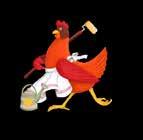









When I was young, there were lotions, potions, creams and medicines in the bathroom cabinet, some of which have stood the test of time, while others have not.

Take for example Germoline. It used to come in a small tin and be applied to cuts and grazes, with or without a plaster. Its smell was so pungent that germs dare not intrude into the wound.

What was Milk of Magnesia for? We were given a spoonful of the chalky, milky mixture if we complained of tummy ache. It has now been withdrawn from sale for not complying with EU recommended sulphate levels.

Calamine lotion is still available: pink and cooling for chicken pox sufferers.
Who remembers Delrosa Rose Hip Syrup? The sticky, sweet liquid provided a vitamin boost for young children as did the welfare orange juice and dried milk.

Cod liver oil was universally disliked but helped provide a vitamin D boost - protection against developing rickets. For constipation was syrup of figs, senna pods or liquorice root. For fever, junior aspirin, crushed between two teaspoons

with a drop of milk added.
Virol was a brand of malt extract which included bone marrow and designed as a nutritional supplement for the feeding of infants. This was remembered as having a pleasant, malty flavour.
The most bizarre home remedy by far was the use of butter. On burns and bumps on the head, butter was rubbed into the affected area.
Just some memories of a childhood in which children’s health was of national importance. What are yours?








Another thick heavy book just thudded through my letterbox.
Nothing too surprising in that, although you might not share my taste in reading material. But not many people know that I have a real challenge with reading since brain surgery in 2017 to reduce the size of a pesky little brain tumour. I used to steam through books like a monster, but I have literally only managed to read one fiction book since then, after about 10 attempts over 3 years. It’s a weird thing. If you’ve worked with me you’ll know that my memory for what we’re working on from session to session is never ever an issue, so you might be surprised to discover that I have this ‘reading’ thing.
Of course, I dip in and out of non-fiction work related books (like this one) because I’m a learning junkie, but it’s HARD. I can read a page and by the time I’ve got down to the end of a page, I’ve usually forgotten what was on
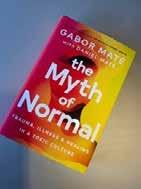
the top half. And yet I know that my neural plasticity is much better than the medics say... the accepted truth is that 2 years out from brain surgery you’ll have recovered as well as you’re going to. Not true for me.



My brain continues to improve 5 years on. And that’s why I’m still buying books and challenging myself to read them. I might have to read and reread, but I will not give up. And if you’ve got a thing that is hard but you know ultimately it’s good for you .... well, you just keep on keeping on too…
For more information visit my website www.sarahkallend.com.


Barbara Kingsolver has been writing brilliant novels for years. And her most recent – Demon Copperhead - has just won the Pulitzer Prize and been shortlisted for this year’s Women’s Prize for Fiction.

It’s basically a re-working of Dickens’ novel David Copperfield. Kingsolver has described it as a contemporary adaptation and it tells of red-headed Demon’s journey from being born to a teenaged single mother, brought up living in a trailer home, taken into foster care and onward and upward with side slips into downward.

In true Dickensian style it’s passionate, rightly angry, moving and full of humour and totally convincing. And it’s uplifting. It’s set in the Appalachian Mountains in the US – an area with more than its share of problems and this is a very modern take on the age-old story of a child growing up in a challenging world.
The characters are flamboyant. You get so involved with the main character that it’s at times painful to read. He’s got real charm, he may have a lousy start but he’s a fighter and you so much want him to win through. It is superb immersive storytelling and one of those books that as a reader you have to give your full emotional response to. Worth doing it.





16 LANE TENPIN BOWLING CENTRE WITH A LICENSED BAR, SNACK BAR, AMERICAN POOL TABLES AND ARCADE GAMES AREA.




GLOW IN THE DARK BOWLING EVERY THURSDAY AND WEEKEND (SELECTED TIMES ONLY)

FREE AMPLE ON SITE CAR PARKING SITUATED JUST OUT OF THE TOWN CENTRE


A WIDE RANGE OF DRINKS, SNACKS AND FOOD AVAILABLE

AUTOMATIC BUMPERS TO ALLOW ALL AGES AND ABILITIES TO PLAY A LEAGUE PROGRAMME AVAILABLE MOST EVENINGS FOR THOSE WHO TAKE IT A LITTLE MORE SERIOUSLY
FANTASTIC OFFERS EVERY DAY OF THE WEEK, ALL ON OUR WEBSITE HERE
Storforth Ln, Chesterfield S40 2TU • Tel: 01246 550 092

The Voice Magazines team had a blast recently when they were invited to Chesterfield Bowl for an afternoon of fun, food, and games. Having parked up in the ample car park, as soon as we arrived, we were greeted with the sound of crashing pins and the aroma of delicious food wafting from the bowling alley’s kitchen.
After grabbing some tasty snacks and drinks from the bar, the Voice Magazines crew laced up our bowling shoes and hit the lanes. Eager to show off our skills and see who would come out on top. The competition was fierce, with plenty of laughs and friendly banter to go around.
Chesterfield Bowl offers more than just 16 lanes of bowling. Visitors can also enjoy a licensed bar, a piazza café, three American pool tables, and video games. We battled it out on air hockey and other classic games in the arcade. It was the perfect way to unwind after a long day at the office. Overall, Chesterfield Bowl provides a wide range of entertainment options for everyone to enjoy.
Of course, all that fun and excitement worked up our appetites. Luckily, the kitchen at Chesterfield Bowl was more than up to the task of satisfying our hunger (and we all know the Voice Team can eat!). The team was presented with a massive platter of mouthwatering food, featuring all sorts of delicious options. From juicy chicken fillets and crispy fries to other comfort food classics, the team indulged in a feast that hit the spot after all that activity. The scrumptious spread was a perfect complement to the fun and games, and the team left feeling completely satisfied.


As the day wound down, the team reflected on what a great time we had had. We had made memories, bonded with each other, and most importantly, had a lot of fun. We were already talking about when they could come back for another visit.

So, if you’re looking for a fun, friendly place to spend an afternoon or evening, look no further than Chesterfield Bowl. With great food, tons of games, and an all-around good time, it’s the perfect spot to let loose and have some fun.









































































Our bespoke compound overlays and chemically bonds to your existing grout, resulting in a low-maintenance, long-lasting, easy-to-clean, as-new finish.









We have transformed thousands of kitchens, bathrooms, en-suites, utilities and hallways over the last 5 years. Most affordable grout and tile refurbishment available.

















Grinling Gibbons was the most celebrated British woodcarver of the 17th century. Born in Rotterdam in 1648, to British parents, Gibbons completed his initial apprenticeship in the Low Countries before emigrating to London in around 1667.




After his arrival in London Gibbons quickly attracted attention – receiving commissions by the mid-1670s to produce decorative carving for two countryhouses in Hertfordshire.
Gibbons was given his first royal commission in 1675, when he was hired by Charles II to produce decorative carving for Windsor Castle. Over the next 25 years, he completed important commissions for Whitehall Palace, St Paul’s Cathedral and Hampton Court Palace. In 1693, he was appointed as master sculptor and carver in wood by King William III.
Grinling Gibbons’s highly distinctive style is characterised by botanical elements carved with hugely naturalistic detail, in very high relief. Gibbons worked with limewood –a material whose uniform but soft structure makes it particularly well suited to high-relief carving.
Gibbons’ limewood carvings were unpainted and unvarnished. They were designed to hang against oak panelling, creating a dramatic

contrast between dark oak and light lime which worked to heighten the effect of their abundance, depth and incredible detail. The huge skill and delicacy of Gibbons’ work is perhaps best demonstrated by a limewood cravat, carved to imitate lace. Examples of his work can be found at Lyme Hall and Chatsworth.
Grinling Gibbons produced his decorative carvings via a large workshop in which different parts of a single design were completed by different carvers – many different hands would have worked on each commission. His style of carving, although unusual in Britain in the mid-17th century, was very quickly imitated by large numbers of contemporaries. Gibbons died intestate at his home in Bow Street on 3 August 1721 and, on 10 August, was buried in London at St Paul’s, Covent Garden, where his wife had been buried two years before.



























Is your
If so, when was the last time you told him you loved him? In fact, have you ever told him that?
When my dad passed away in early 2020, I was so grateful that the day before he died I was able to hug him and tell him I loved him. Of course, I didn’t know that day I visited him in hospital would be the last time I would see him. And isn’t that the point? None of us know how long we have left, the parent you saw yesterday, perhaps got irritated or annoyed by, may not be around tomorrow. It’s a scary and sobering thought isn’t it?
We live in a much more open society; women and men are encouraged to share their feelings more and get things out in the open - so how come we don’t tell our nearest and dearest how much we love them?
It doesn’t matter if we “think they know”, sometimes the other person needs to hear the words too, and hearing those words could make a positive difference to their state of mind and wellbeing.
Male mental health has become a huge topic over recent years, the days of the British “stiff upper lip” are, thankfully, fading away, but even now, men are notoriously reluctant to talk about their feelings, preferring instead to keep them bottled up. This is a problem. A BIG problem.

Here are some scary statistics:
• Three times as many men as women die by suicide
• Men aged 40 to 49 have the highest suicide rates in the UK
• Men report lower levels of life satisfaction than women, according to the Government’s national wellbeing survey
• Men are less likely to access psychological therapies than women: only 36% of referrals to NHS talking therapies are for men
• Men are far more likely than women to go missing, sleep rough, become dependent on alcohol and use drugs frequently.
All of us are familiar with gender stereotyping when it comes to women - looking a certain way, wearing make-up, taking care of the babies etc. - and we
are aware of how damaging this is, but negative gender stereotyping also affects men. They are often expected to be the breadwinners, to be strong, dominant and in control, and yet at the same time to be “soft, caring, loving, nurturing”. It’s no wonder that some men no longer have any idea of how they are expected to act and thus turn to “coping mechanisms” like drink and drugs. Even worse, there is the rise of militant “toxic masculinity”, as demonstrated by the likes of Andrew Tate.
This Father’s Day, tell your dad you love him. Tell all your male relations and friends you love them (yes, even…especially…if you’re a guy!). Make it acceptable to share feelings and emotions.
PS - if you know a man who is struggling with mental health issues, point them in the direction of Andy’s Man Club (https://andysmanclub. co.uk/).






















Our Services include:
• Septic Tank Emptying & Repairs

• Drain Jetting
• Drain Repairs
• Groundswork
• Road Sweeping
• Gully Emptiying

• Dust Supression
• High Pressure Drain Jetting
• CCTV drain inspection

We should be safe to put summer bedding plants out now and the key to getting a brilliant show is to add some slow release feed when you plant...
unless you’re planting into fresh compost which often has nutrients to encourage growth. Then remember to keep watering until established and in periods of hot dry weather –Water in the morning if possible. A good drench is better than small amounts frequently. Evening watering is next best although it can encourage slugs as the ground will be wet overnight. Preferably don’t water in the middle of the day, it can scorch blooms. Hanging baskets dry out fast and water retaining gel can help counter this.
It might seem odd to talk about pruning when so much is bursting into flower, but there are some shrubs which need it now if you’re going to get the best out of them next year. These include those which flower in spring such as philadelphus (mock orange) forsythia and flowering currant. In order to get a good blossom show year on year they need to be cut back as soon as they’ve finished flowering. Take out dead or damaged stems to ground level and prune up to a quarter of old stems to near the base. On stems which have flowered this year, cut back to a lower strong growth.
If you have still got tulip foliage remaining in pots, and with this year’s cold start to the season that’s quite possible, it’s a good move to lift and plant them in a border. This not only frees up the pot for summer planting, but tulip bulbs which might show again next year have a better chance if fed with tomato feed and given a new home. Leave them in the pot and you’re more likely to get lots of leaves and small flowers.
The old mantra. Deadhead for more flowers. Particularly essential for sweet peas as they’re prone to completely giving up producing new flowers once they’ve set seed. The only plants you might want to leave to go to seed are things like digitalis which will produce more plants for you free of charge next year.







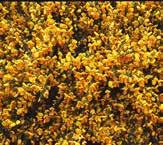

One of the region’s most spectacular flowers is something we often take for granted and indeed, barely notice, the common gorse. In the Peak and North Derbyshire, we have two gorse species, the common gorse (a big, bold, brash shrub), and the western gorse (an altogether more subdued species). As its name suggests, the latter is rather restricted to western Britain and so we are on the eastern edge of its distribution, and it is not so common. The name ‘gorse’ comes from AngloSaxon ‘gorst’, and its alternative name ‘furze’ from ‘fyrs’, also Anglo-Saxon. Place-names like Fir Vale in Sheffield derive not from conifer trees but from ‘furze’ on the common, from a time when this plant was very important to local people and the rural economy. This was when most people, and especially the poorer ones, relied on the heath and common for their subsistence.
Being so abundant, gorse was significant to people and figured in folk culture. It was said that ‘when gorse is not in bloom, then kissing is out of season’, the reason of course being that this shrub flowers all year round. That said, its main flowering period is in spring when it can be truly spectacular. Indeed, in times past, before urban sprawl and ‘improved’ farming swept away most of our heaths and commons, the swathes of bright yellow across the landscape were amazing spectacles. It was said that Swedish botanist
Carl Linnaeus, one of the key founders of modern natural history and scientific botany, came to Britain and was profoundly affected by the vista when first seeing gorse in bloom. Not found as a native eastward into Europe, gorse is a denizen of the western seaboard. Linnaeus visiting from Sweden had never seen it en masse before. When shown an entire landscape covered in the yellow of common gorse on Putney Heath, he fell to his knees and gave thanks to Almighty God!
Along with being visually spectacular, gorse or furze, was also especially useful to medieval communities in some places until the 1900s. Many farms in Derbyshire and the Peak would have had ‘furze fields’ where gorse seed was scattered on poorer land to grow gorse. It grew in abundance on poor, sandy soils (because it ‘fixes’ or traps atmospheric nitrogen using nodules in its roots), and thus was a great provider of forage for grazing livestock. Put through a gorse shredder or cutter, the resulting greenery was fed to the animals. Along with this, gorse burns ferociously and cleanly to leave little ash. It was therefore good at starting fires (as kindling), and for communal baking ovens or cloams. The bottom slice of a baked loaf was cut off with its ash, but the rest was good to go. Gorse made good temporary fencing on open land such as common or heath, and when seen in hedgerows today, it often indicates a one-time heathland. Bundled up and tied to a long stick, you could use it to sweep your chimney, a practice described for the Hope Valley in Derbyshire.
Gorse is also excellent habitat for birds such as whinchats, stonechats, yellowhammers, and meadow pipits.
